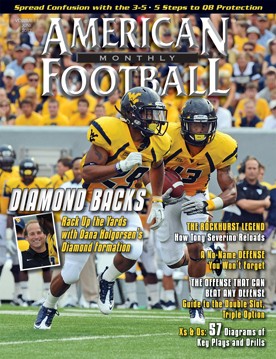Article CategoriesAFM Magazine
|
Drills Report – Linebacker Progression Drillsby: Lane ReynoldsDefensive Coordinator, Hamilton High School (AZ) © More from this issue Coaching linebackers is an ever-evolving process. With today’s offensive schemes becoming more and more complex, we must ask more of our defensive players. I ask our linebackers to read keys, be aggressive run stoppers in the box, defeat blocks, get to the ball using a specific technique, tackle the ball carriers, find receivers and cover them up in zone concepts as well as cover backs and receivers man-to-man. While doing all this, I also expect them to know the game plan, call the defense, understand down, distance and field position, set the front, make checks on certain formations, shifts, motions, communicate before and during the play and above all, be leaders on and off the field. As I ask more and more from our linebackers, I coach them to be sound technicians while understanding their rules and run fits week-to-week. <....The full article can only be seen by subscribers.
|
|
|||||||
| HOME |
MAGAZINE |
SUBSCRIBE | ONLINE COLUMNISTS | COACHING VIDEOS |
Copyright 2026, AmericanFootballMonthly.com
All Rights Reserved





